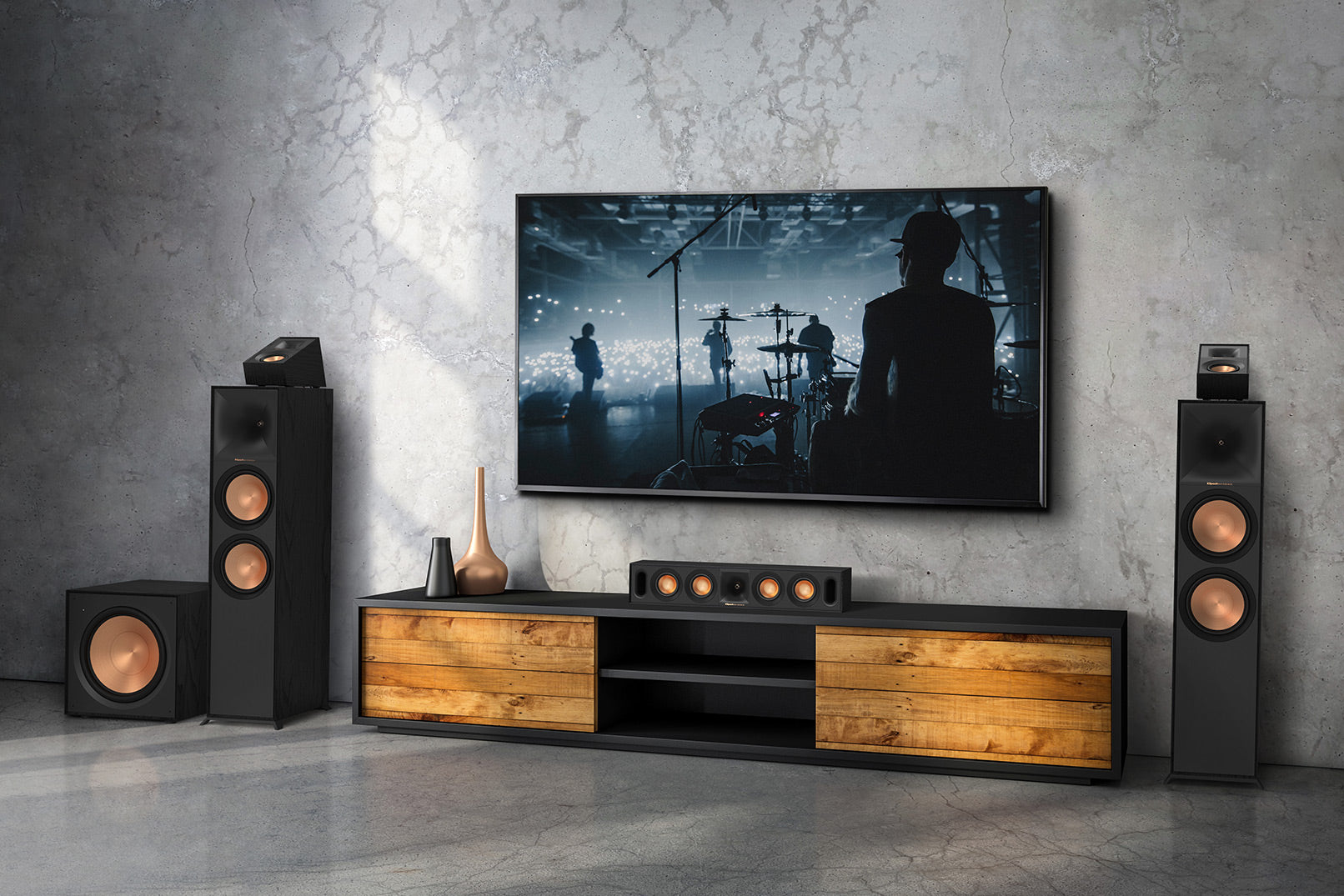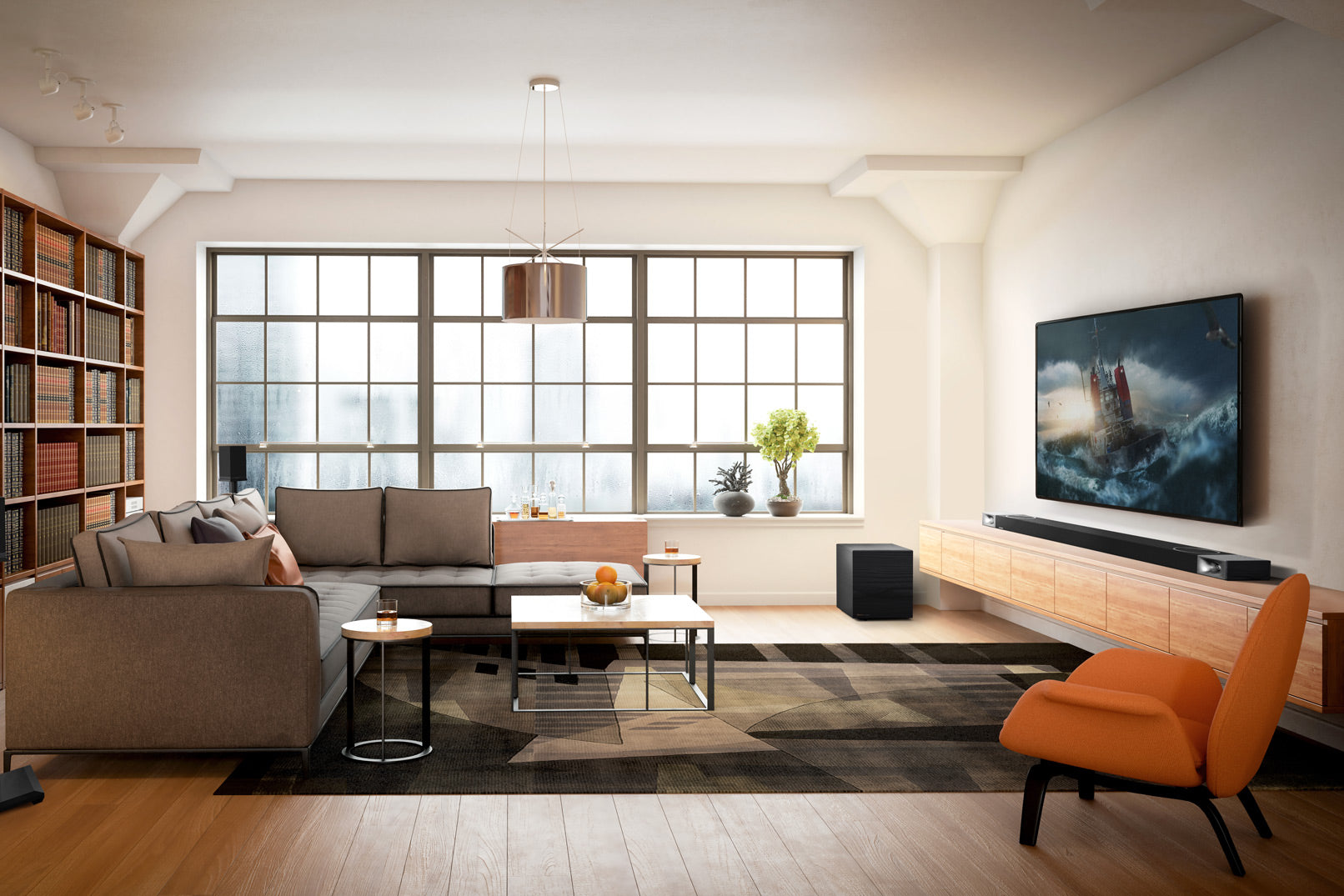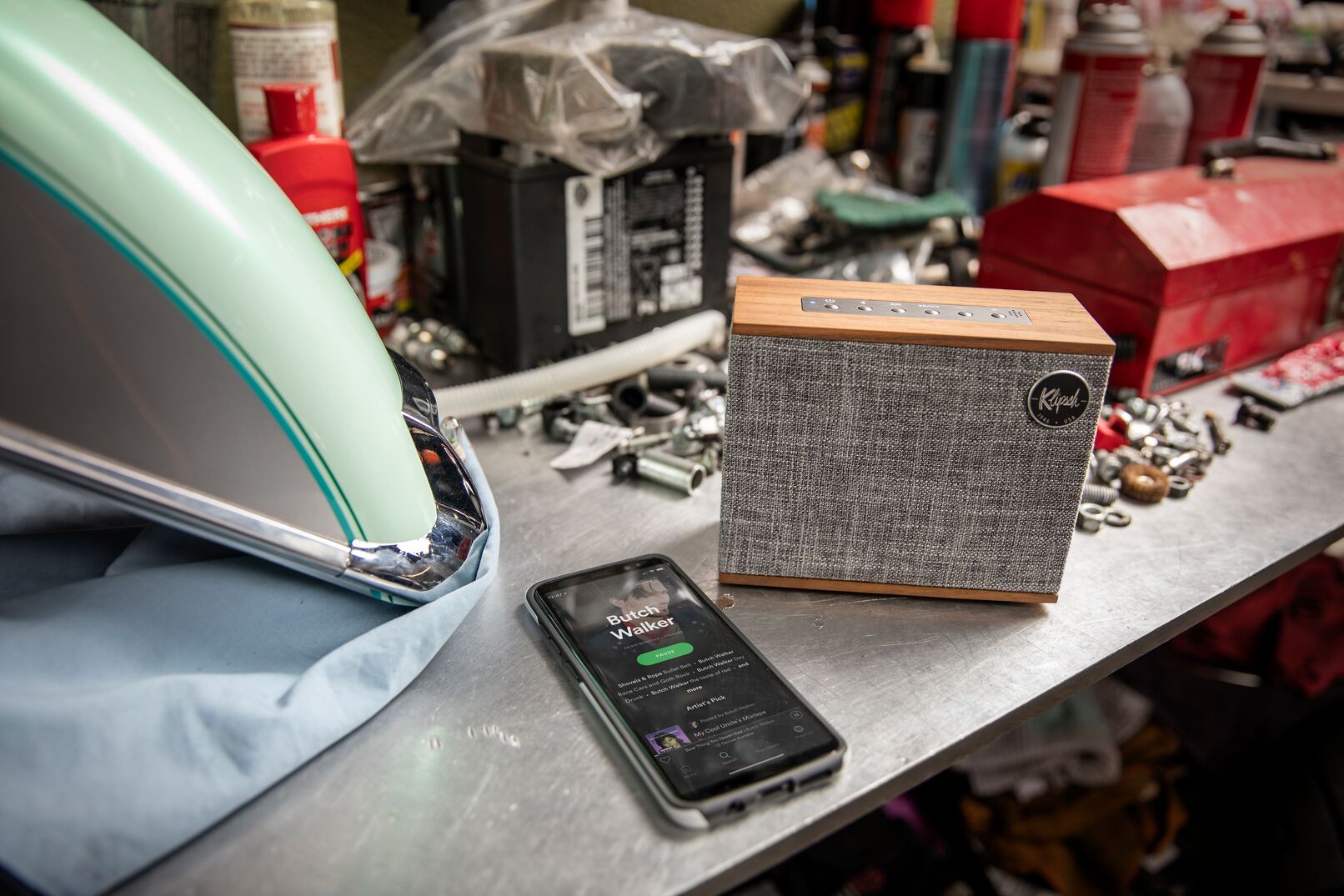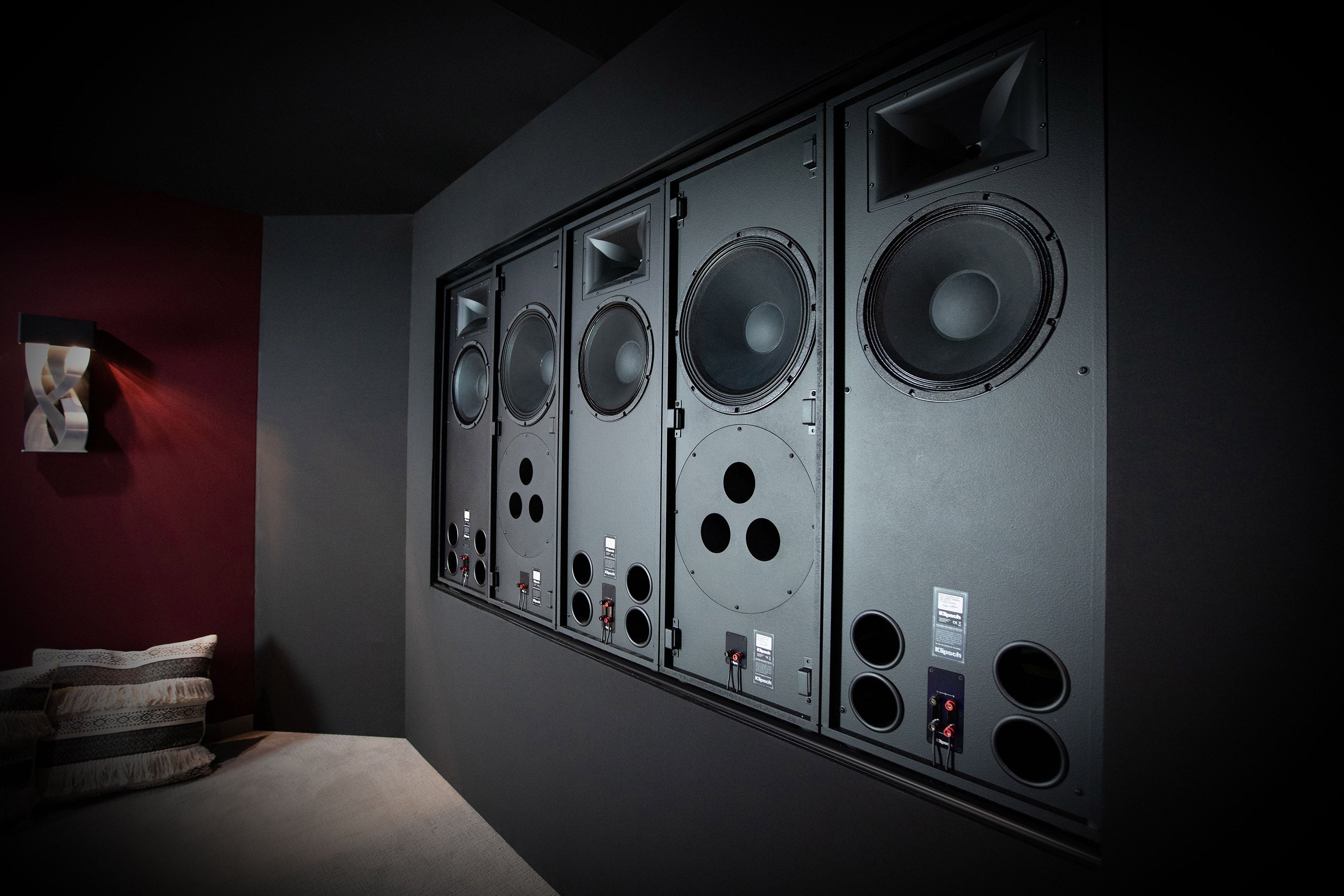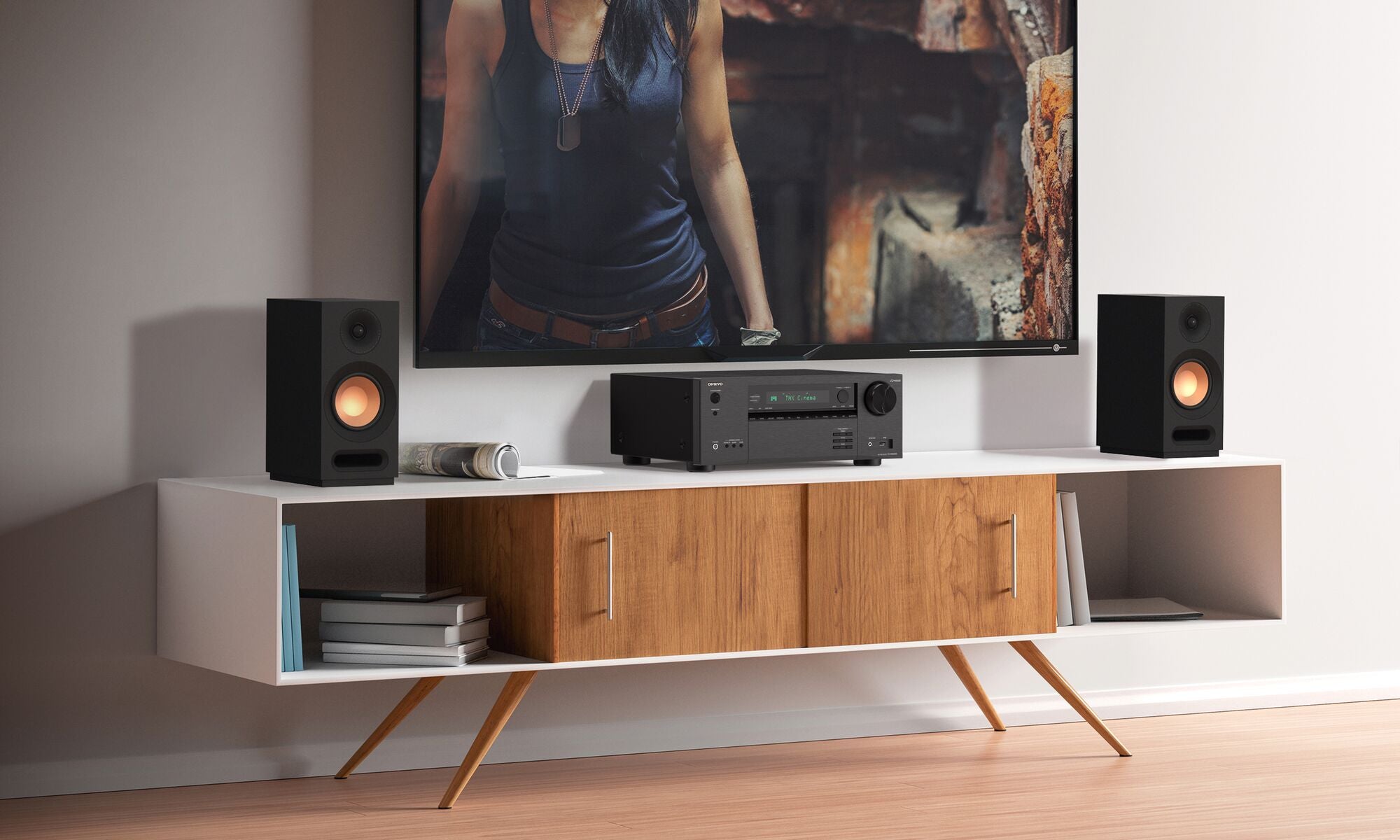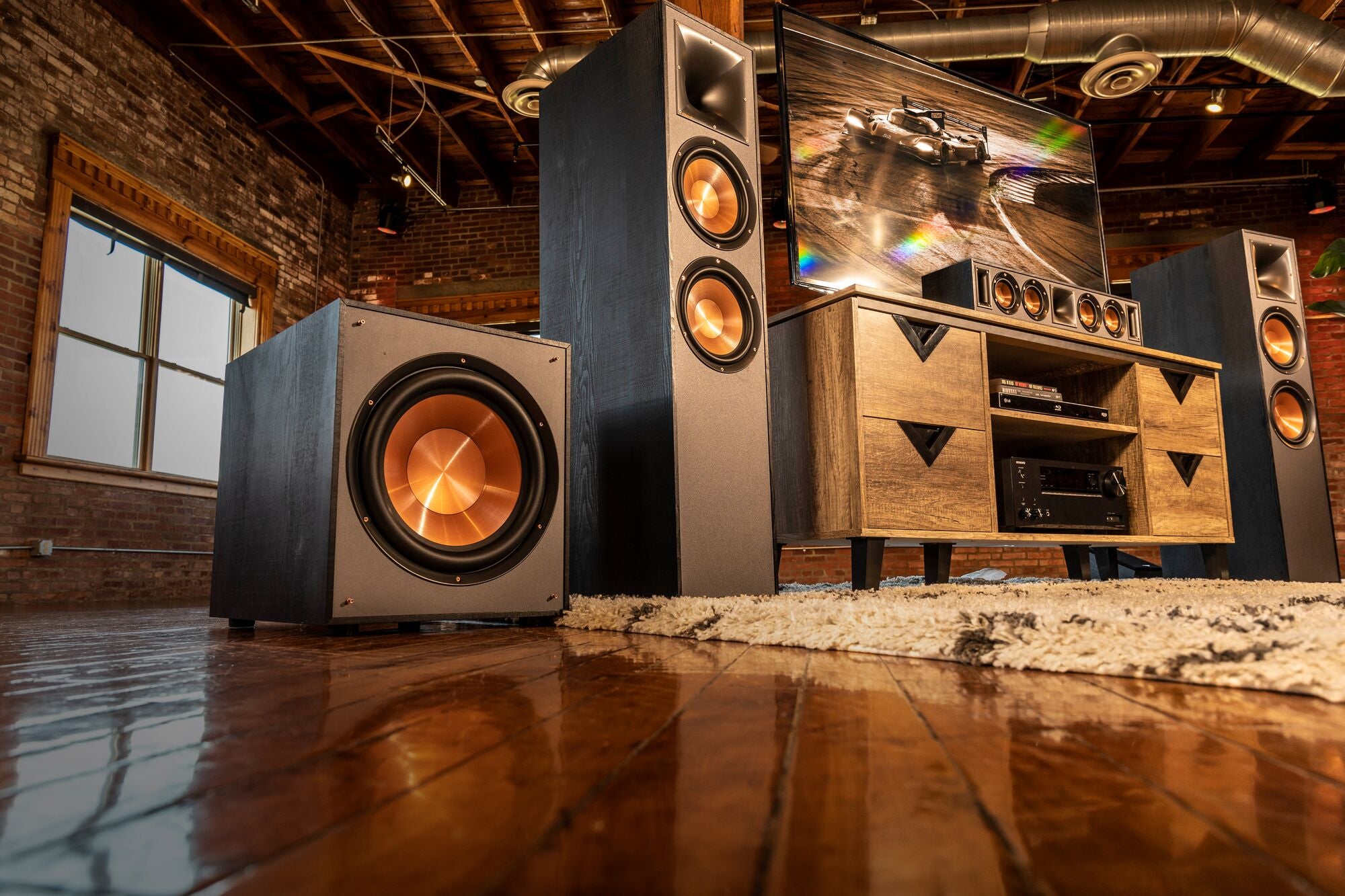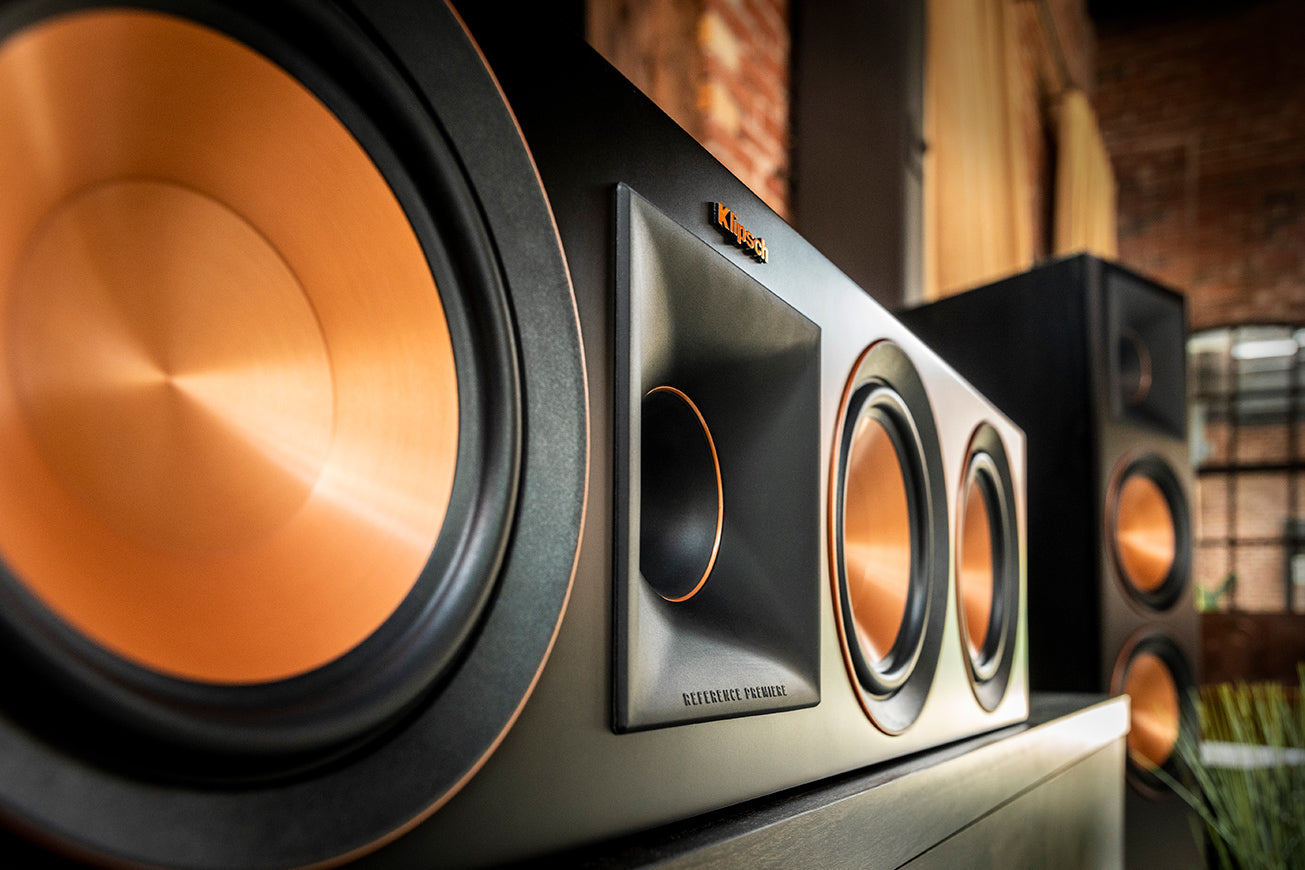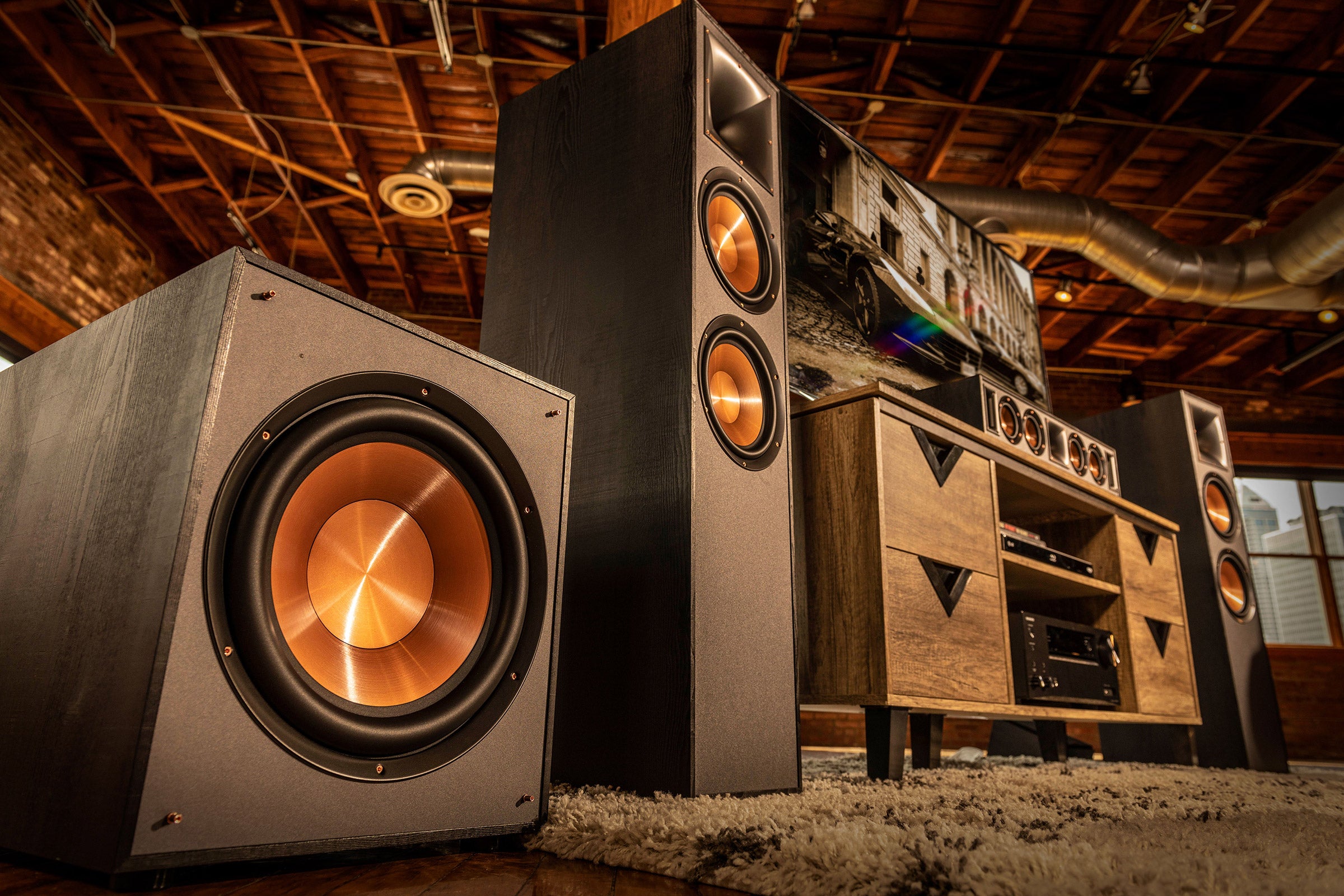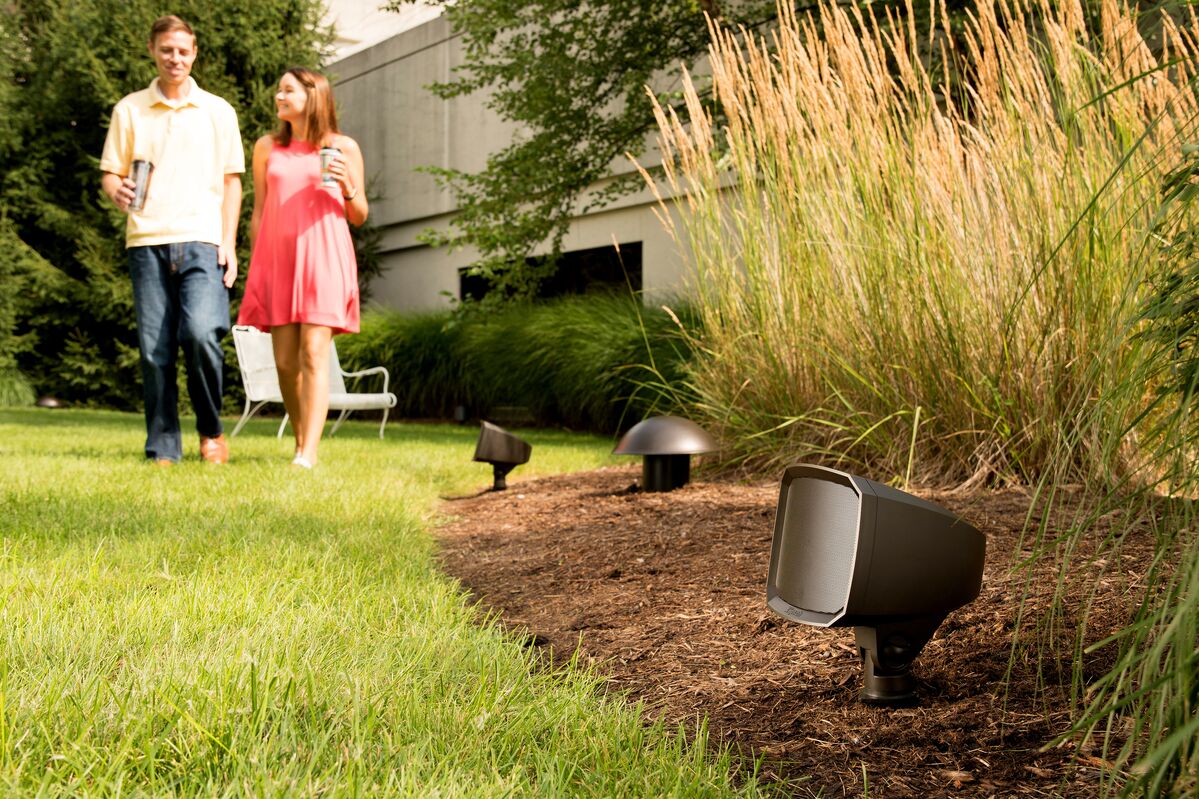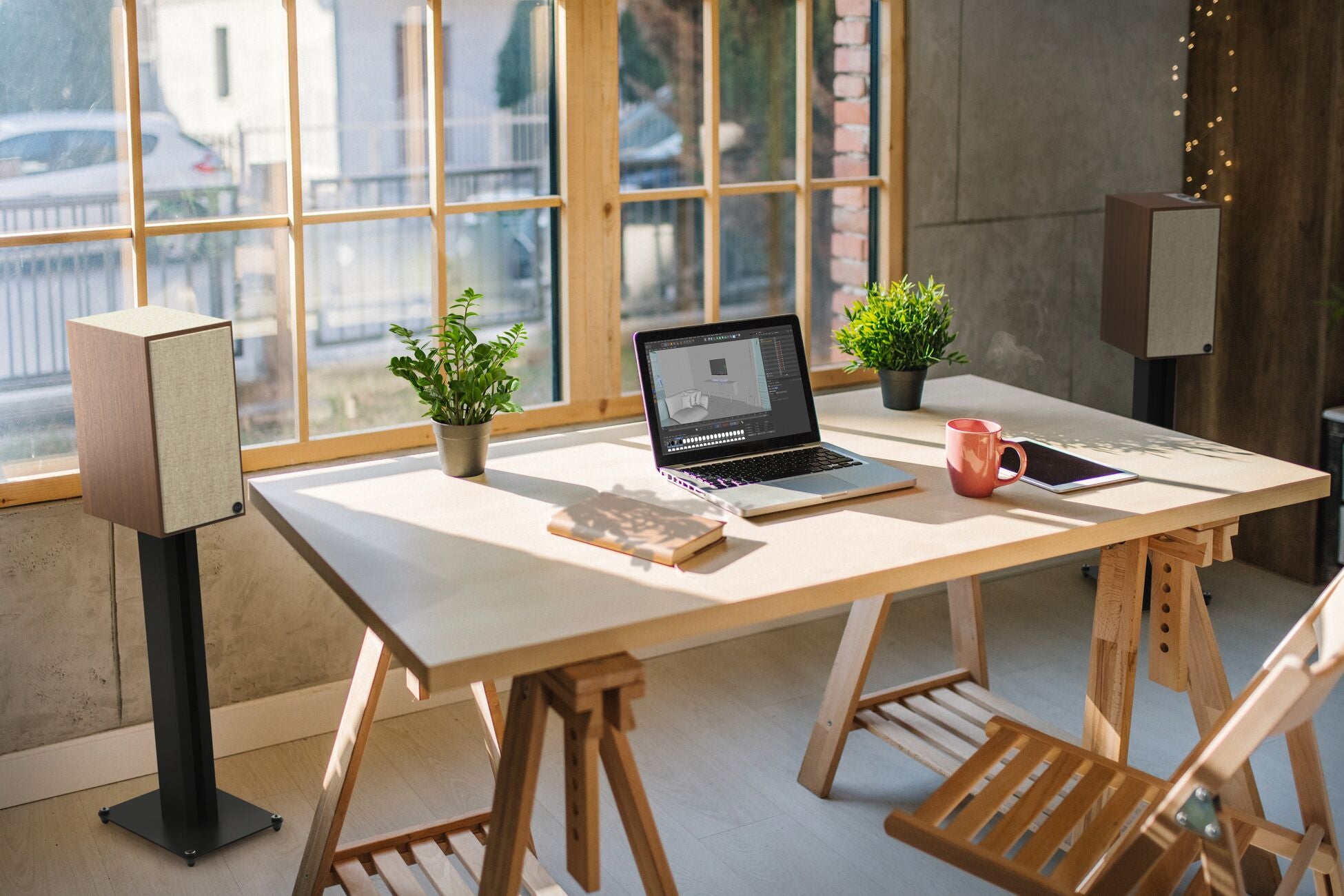If you’re slowly starting to build your home theater system, the first thing you probably picked out was a pair of speakers. This is only the beginning, though. Whether your setup is for movies, music, games, or all of the above, a powered subwoofer is one of the key components of a complete audio system.
We’re here to answer some common questions about subwoofers and how they can elevate your home theater experience.
SHOP SUBWOOFERS NOW>
WHAT IS A SUBWOOFER?
In the words of Meghan Trainor, a subwoofer is all about that bass. It’s the speaker that delivers the lower frequencies – specifically 20-200 Hz – that a traditional two-channel or surround sound setup can’t reproduce on its own. These low frequencies come from instruments such as the kick drum, bass guitar, and pipe organ, as well as movie sound effects like explosions.
WHY DO I NEED ONE?
While you may hear the bass from your bookshelf or floorstanding speakers, a subwoofer allows you to feel the sound. Listening to bass-heavy music like hip hop or EDM or watching a full-throttle action flick without a subwoofer leaves a lot to be desired. Plus, you’re not experiencing the song or movie the way the artist or director intended.
You might be asking yourself: I don’t listen to rap or watch action movies, so why do I need one?
Sure, a subwoofer is a bass-thumping juggernaut, but that’s only scratching the surface. A great subwoofer helps take away the heavy lifting from your loudspeakers, improving your overall system.
The dynamics are more compelling, the soundstage widens, and the stereo imaging becomes more accurate. Even if you prefer spinning folk records and watching dialogue-driven indie dramas, a subwoofer helps produce a more vibrant, all-encompassing sound.
LEARN HOW TO CONNECT YOUR SUBWOOFER TO YOUR SYSTEM>
WHERE DO I PLACE A SUBWOOFER?
Honestly, you can place your subwoofer anywhere. But since all rooms are constructed differently, the results are going to vary. If you’re serious about getting optimal bass performance from your subwoofer, there may be some trial and error involved.
We get it. Not everyone has a dedicated home theater or listening room with the flexibility to place your subwoofer anywhere. Most likely, your system is located in your living room, which means décor, furniture, and other things are competing for floor space. You might have to rearrange some stuff, but it’s worth it to find the “sweet spot.”
Along with placement, acoustic treatment is another factor to consider if you want to get the most out of a subwoofer. You can have the best subwoofer on the planet, but when it’s in an acoustically poor room, expect subpar bass performance. Acoustic panels, diffusers, and bass traps are all excellent ways to improve your room’s acoustics. Plus, many modern A/V receivers come equipped with room correction technology such as Audyssey and AccuEQ. It calibrates each speaker to create a more harmonious home theater experience.
CHECK OUT OUR 3 TIPS ON WHERE TO PLACE A SUBWOOFER BLOG FOR MORE TIPS AND HINTS.
DOWNFIRING VS FRONT-FIRING SUBWOOFERS:
Placement can also be determined by whether you've opted for a down-firing or front-firing subwoofer. While there's no discernible difference between how each option sounds, there are certain factors you need to evaluate depending on the space you're looking to fill, specifically whether you're placing the sub in a home or an apartment.
LEARN THE DIFFERENCE BETWEEN FRONT-FIRING AND DOWNFIRING SUBS>
HOW DO I DIAL-IN MY SUBWOOFER?
A subwoofer works best when it doesn’t draw attention to itself. Your subwoofer and loudspeakers should act as one unit. The bass coming from the subwoofer should blend seamlessly with the rest of your speakers.
On the back of our subwoofers, you’ll find a low-pass crossover knob. Crossover is the frequency where your speakers begin to roll-off, and the subwoofer starts to produce bass notes. Set your crossover point about 10 Hz above your speaker’s lowest frequency range. For example, 34 Hz is the lowest frequency the Next-Gen Reference R-800F can handle, so you would set your crossover at around 45 Hz.
The 0/180-degree phase switch is another subwoofer control. The mechanics behind the phase can get pretty complicated. In layman’s terms, subwoofers and speakers perform best when their woofers move forward and backward in a synchronized fashion. When they don’t, the speakers and subwoofer are out of phase, which cancels out the bass. To dial in your phase, play some bass-heavy music, listen for a bit, and have a friend switch between both settings. Whichever one sounds better, leave it there. If you can’t hear a difference, set it at 0 degrees.

SHOP SUBWOOFERS NOW>
SHOULD I GET MORE THAN ONE?
A large subwoofer like the SPL-150 can take any home-theater setup to the next level. However, as your system grows, adding a second sub can help ensure the bass is evenly distributed throughout the whole room. Two SPL-150s increase your output capability by close to 6 dB, meaning everyone in the room can feel those powerful, low tones while watching action and sci-fi movies.
A pair of subwoofers can also minimize the seat-to-seat variance of bass response, offering an even coverage pattern of low frequencies throughout the room. Depending on room size and placement, one sub alone makes it challenging to deliver accurate bass responses at multiple listening positions. This is because the frequency response of an individual subwoofer tends to have peaks and nulls. A peak is an exaggeration of a bass note, while a null is the absence of bass. When paired together, two subwoofers smooth out those peaks and nulls, offering a more accurate frequency response at more locations in the room.
All in all, a subwoofer is an essential part of your system. If you’re on a budget or in the infancy of your home-theater development, start with just one subwoofer. As your system grows, think about adding a second low-toned beast to your setup. You’re adding more bass and evenly distributing it throughout the room. The results? Improved bass performance.
Are you looking to dive deeper? Read our other subwoofer post that touches on construction, wattage, and wired vs. wireless subwoofers

